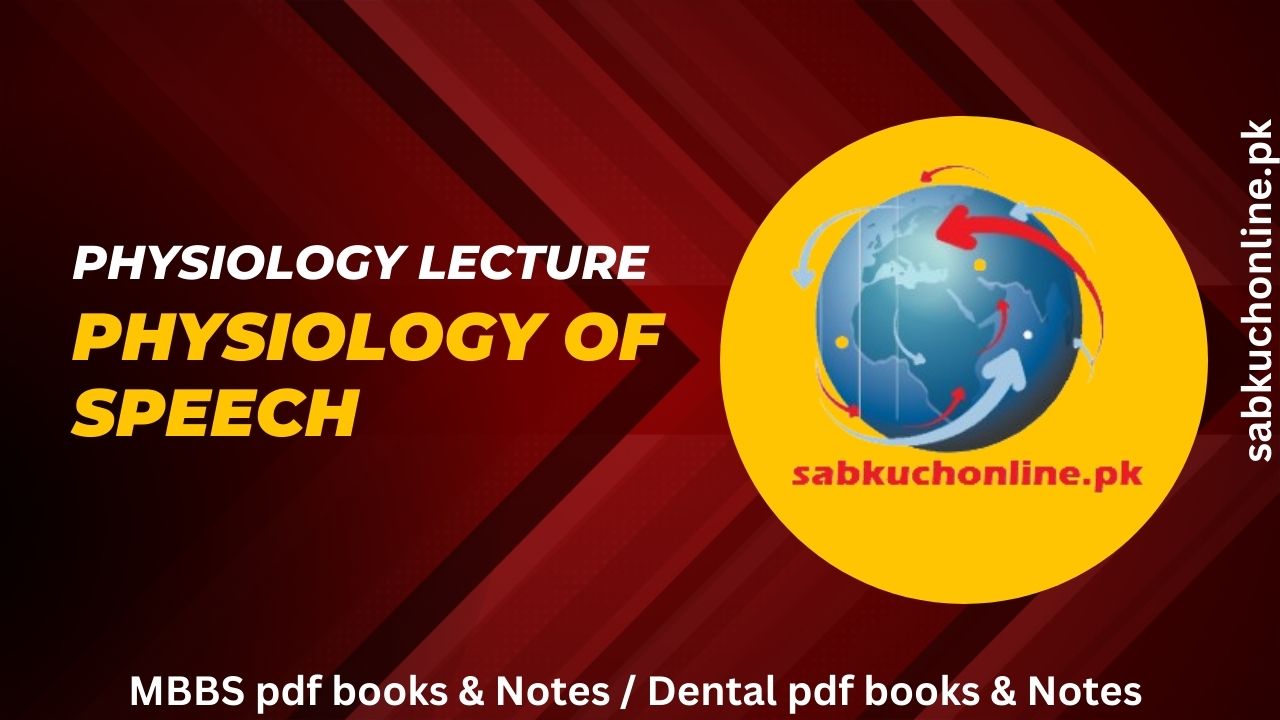Learning objectives:
- Explain the functions of specific cortical areas and association areas in the physiology of speech.
- Identify the function of the Wernicke’s and Broca’s Area.
- Explain the pathophysiological disorders related to speech.
Expression of thought by production of articulate sound, bearing a definite meaning called speech.
When sound produced verbally called speech.
If it expressed by visual symbol known as writing.
If visual symbols or written words expressed verbally becomes reading.
LANGUAGE & SPEECH
Unlike the sensory and motor regions of the cortex, which are
present in both hemispheres, the areas of the brain responsible
for language ability are found in only one hemisphere—the
dominant hemisphere- which in most cases is the Left
hemisphere.
Language involves the integration of 2 distinct capabilities:
Comprehension (ability to understand what you have heard or read)
Expression (ability to speak)
Development of speech Involve integration of three important areas of cerebral cortex;
- Wernicke area – speech understanding/comprehension
- Broca area – speech synthesis/vocalization
- Motor area – activation of peripheral speech apparatus
The angular gyrus is a region of the brain in the parietal lobe, that lies near the superior edge of the temporal lobe

WERNICKES SPEECH AREA located in temporal lobe.
BROCAS AREA located in frontal lobe.

WERNICKE’S AREA & SPEECH
Wernicke’s Area, which is concerned with language comprehension, is located in the left temporal lobe, at the juncture of the parietal, temporal, and occipital lobes.
Wernicke’s Area plays a critical role in understanding both spoken and written words. It is considered
to be the language comprehension center (also called the General Interpretative Area, the Gnostic Area and the Knowing Area).

BROCA’S AREA & SPEECH
Broca’s area, which governs speaking ability and articulation, is located in the Left Frontal Lobe,
close to the motor cortex, near the areas responsible for muscles of the face, tongue, jaw and throat.
Broca’s area is responsible for producing words. It controls motor functions involved with speech production.

Speaking a written word


Speaking a hearing word


Applied physiology
Aphasia
Difficulty in producing or comprehending the speech due to brain damage

INTERPRETATION AND COMPREHENSION OF SPEECH SEND THESE INTERPRETATION /IDEAS TO BROCAS AREA
Fluent but meaningless speech.
The ability to hear, speak and to read and write
without being able to comprehend the meaning
of speech.
A person might hear perfectly well and even
recognize different words but still be unable to
arrange these words to formulate thoughts that
are conveyed or needed to be expressed.
Likewise, the person may be able to read words
from the printed page but be unable to
Recognize the thought that is conveyed.
If the lesion is less severe, then may be able to
formulate thoughts but unable to put together
the appropriate sequence of words to express
thoughts.

Motor aphasia: impairment in the ability to
programme movements of tongue, lips and
throat required to produce the proper
sequence of speech sound.
No fluent speech.
He/she can decide they want to say but
unable to make vocal system to emit word.



LEARNING OBJECTIVE

Functions of corpus callosum:
- Transfer of information from Wernicke’s area of dominant hemisphere to motor cortex of opposite hemisphere.
- Transfer of somatic and visual information from non dominant hemisphere to Wernicke’s area of dominant hemisphere.
Functions of anterior commissure:
- Transfer of emotion from one hemisphere to other.


